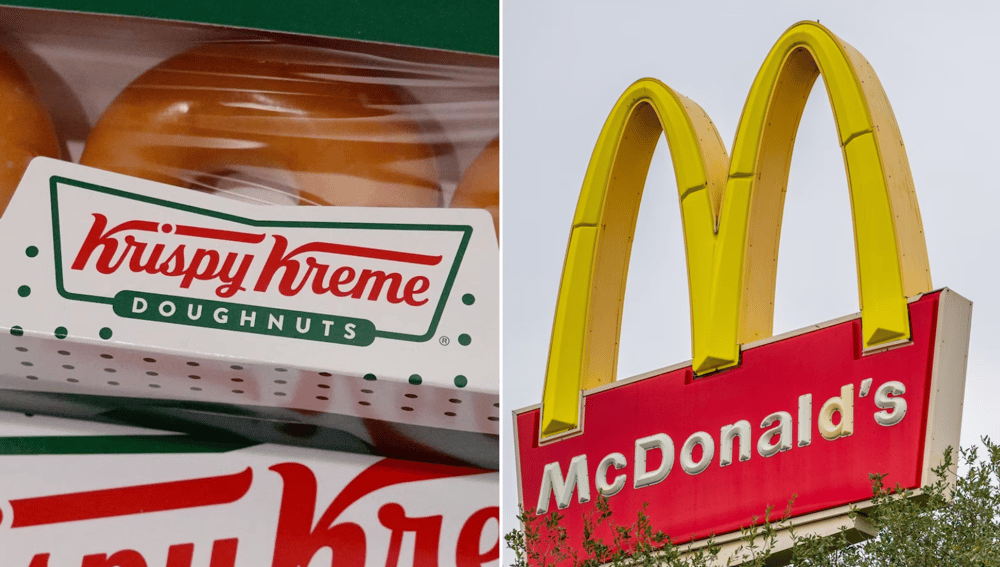Strong Protein, Weak Sentiment: Tyson Leverages Poultry Gains to Offset Beef Pressures
Tyson Foods Inc. $TSN surpassed Wall Street’s expectations for second-quarter profit, driven by strong demand for poultry and operational cost reductions. Despite reporting weaker-than-expected quarterly revenue, the meat processing giant reaffirmed its full-year revenue outlook, signaling cautious optimism as it navigates persistent market and consumer headwinds.
The company’s performance reflects a broader trend: consumers are turning to more affordable proteins and convenient food formats in response to economic uncertainty. Tyson has capitalized on this shift, particularly through its frozen and ready-to-eat product lines, as households lean toward cost-effective, at-home meal solutions.
Nonetheless, the post-earnings dip of 1.5% in after-hours trading underscores lingering concerns around revenue momentum and margin resilience, especially as consumer confidence continues to erode under the weight of inflation expectations and political trade rhetoric.
Poultry Strength Keeps Tyson on Stable Ground
Tyson's poultry segment emerged as the key growth engine during the quarter, thanks to heightened demand across both retail and foodservice channels. While beef prices remained elevated due to limited U.S. cattle supply, the surge in chicken consumption, especially from restaurants and institutional clients, helped mitigate margin pressure across the protein portfolio.
Efforts to streamline operations and reduce input costs also contributed meaningfully to Tyson’s bottom line. However, demand softness in certain categories and pricing fatigue among consumers signal ongoing challenges in maintaining revenue consistency.
Areas Where Tyson Saw Performance Support:
Higher sales volume in the poultry division, particularly from restaurant chains and quick-service food outlets.
Improved cost control measures in procurement, production, and logistics.
Resilient retail segment performance, driven by frozen meats and meal-prep convenience items.
Offsetting weakness in the beef segment, which continues to struggle with elevated livestock costs.

Broadening Pressure Points in the Protein Market
Even as Tyson adjusts to a more cost-conscious consumer, the company cannot ignore broader economic signals. April marked the fourth consecutive monthly decline in U.S. consumer sentiment, a development that may hinder premium product sales and weigh on discretionary spending across retail food categories.
Additionally, the outlook for input costs remains clouded by macroeconomic and political developments. Ongoing discussions around tariff expansions under the Trump administration could elevate import costs and squeeze margins — particularly if feed, equipment, or packaging materials are impacted by trade restrictions.
Potential Risks and Influences Ahead:
Sustained decline in consumer sentiment, which may erode pricing power and demand for value-added products.
Persistently high cattle prices, challenging the profitability of Tyson’s beef business.
Tariff-related cost increases, especially in feed, materials, or export-related supply chains.
Slower foodservice recovery in select regions amid economic uncertainty.
Volatile commodity markets, which could disrupt cost-planning and supply contracts.
Resilience in Protein, But Watchful Eyes on the Horizon
Tyson Foods’ second-quarter earnings beat confirms the company’s operational flexibility and strong brand positioning, especially in the poultry and convenience food categories. Yet the reaction from investors — and a slight revenue miss — reflect an industry under pressure to maintain growth in the face of shifting consumer behavior and macroeconomic headwinds.
As Tyson continues to lean on its diversified protein portfolio, attention will remain fixed on the trajectory of consumer confidence, input cost inflation, and regulatory developments. The company’s ability to balance efficiency with innovation will be key in sustaining momentum through the remainder of 2025.















Comments